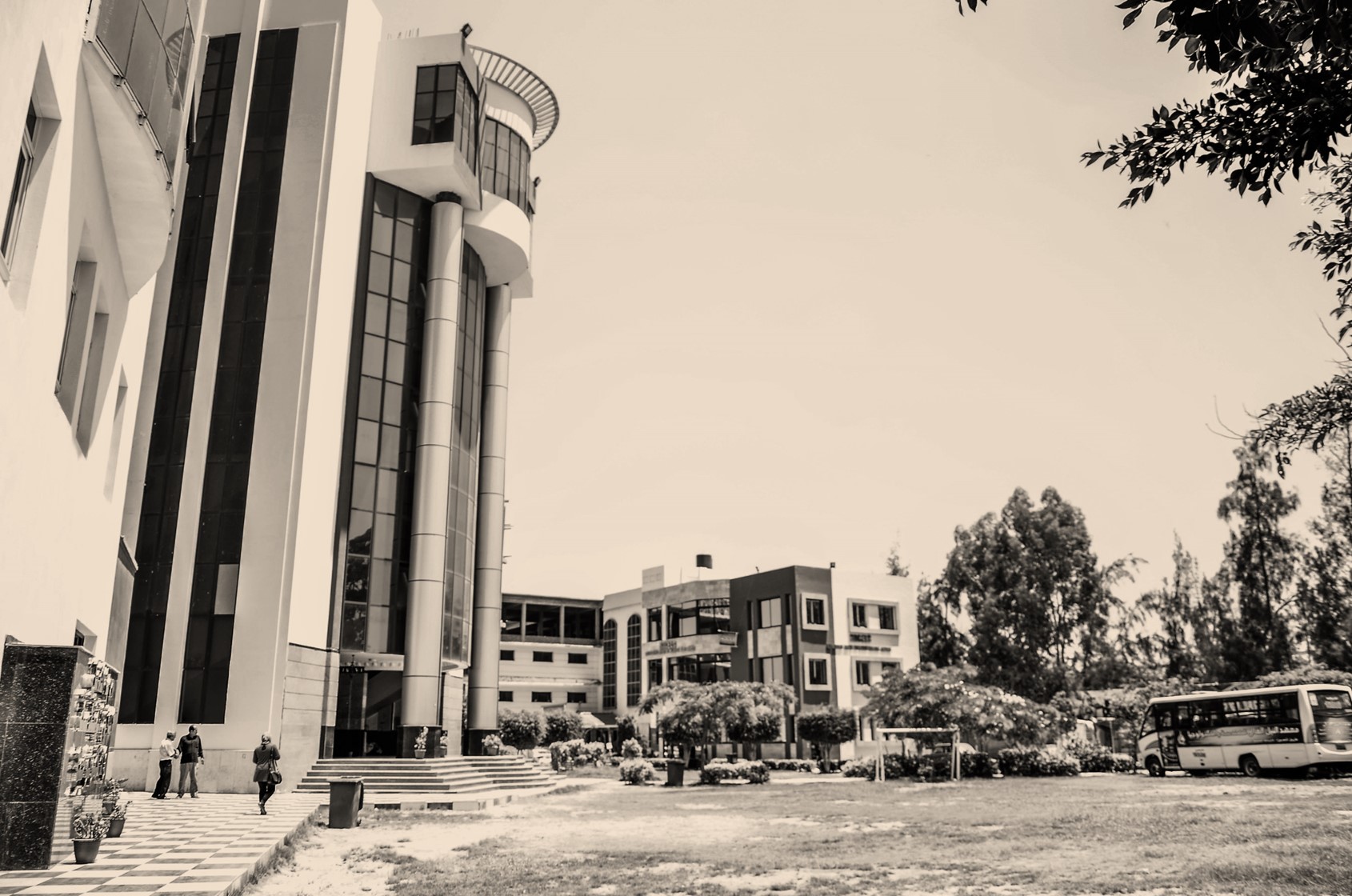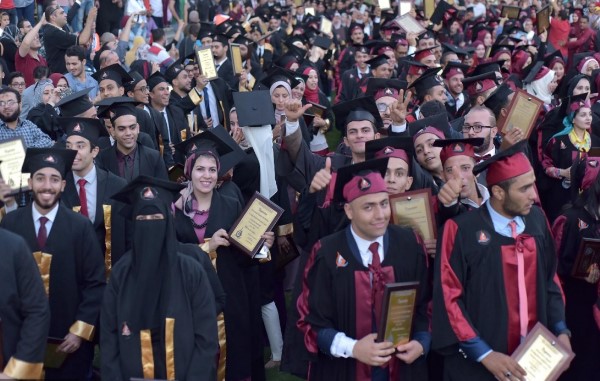About Our Institute:

According to the Ministerial Decree No. (3093), issued on 2/8/2012, Mansoura Association for Educational Services ( Owner of the institute) has established Nile Higher Institute for Engineering and Technology in Mansoura to Graduate qualified, competent and skilled engineers who can compete in the labour market of modern engineering fields and different specializations that serve the society. The institute has a legal Entity of its own, and Its funds are independent of the Associations Funds. These funds are dedicated to scientific, educational and research purposes to achieve the institute’s objectives. The institute is also subject to the provisions of Law No. (52) of 1970 And the regulation issued by Resolution No. (1088) of 1987, and any other laws issued regarding the organization of private higher institutes.
The Institute primary objectives are participating in the development of education and scientific research and provideing the community specialists with the knowledge, with experience and core skills in all fields. It includes many academic departments that provide employable skills to students that lead to employment in most workplaces in Egypt and the Arab world. Students are admitted to the institute through electronic coordination for universities and institutes via the internet. The duration of study at the institute is five academic years according to the credit hours system. Upon successful completion of the course of study, the student is awarded a bachelor's degree in the specialization, approved by the Minister of Higher Education and Scientific Research, and equalized by The Supreme Council of Universities (SCU).
Mision, Vision & Objectives

Vision:
Our vision is attaining competitiveness and leadership locally and regionally by providing engineering programs, which are compatible with the labor market needs and enhancing social participation.
Mission:
Our mission is be committed to work in accordance with the academic standards to prepare a graduate capable of competition locally and regionally, and to urge the optimal use of available resources and interest in scientific research to achieve the effective community participation.
Strategic Objectives
First Developing the institutional capacity of the Institute. This can be achieved by:
- the Institute's adopting of a strategic planning approach to achieve its mission.
- Stick to the principles and rules of governance and develop the administrative system at the Institute to achieve its mission.
- Applying quality management systems in all practices and developing performance evaluation systems.
- Setting a development plan and raising the efficiency of human resources at the Institute.
- reinforcing commitment to professional ethics.
Second Developing and promoting teaching and learning. This can be achieved by:
- Designing and profiling educational programs and courses in accordance with National Academic Reference Standards (NARS), the new developments in science and technology, and labor market needs.
- Developing the institutional capacity to support educational effectiveness.
- . Upgrading teaching and learning strategies and assessment methods, with innovation and diversity.
- Promoting the practice of learning and student activities and student support services to ensure their national loyalty and devotion to the Institute.
- Establishing a connection between Alumni, the Institute and various recruiters, and maintaining the continuous development of training programs.
Third Expanding community participation and improving competitiveness:
- Setting a plan for community participation and environment services.
- Creating a consultative status at the Institute and developing new methods of community service.
- Developing the Institute's own resources.
Academic Degrees
The Institute awards the Bachelor's degree in Engineering and Technology in the following Majors:

- Civil Engineering (CE).
- Architectural Engineering (AE).
- Communication and Electronics Engineering (CEE).
Academic Departments:
- Elementery Science Department .
- Civil Engineering Department (Structural Engineering - Public Works Engineering).
- Architectural Engineering Department.
- Communication and Electronics Engineering Department (Power and Electronics - Communication Engineering - Computer and Systems Engineering).
Civil Engineering Department:
Civil Engineering is a branch of engineering that is closely related to the beginnings of human existence and its development throughout history. It is a professional engineering discipline that deals with the study, design and analysis of human facilities, including roads, bridges, canals, tunnels, airports, ports, sewerage systems, dams, and irrigation projects. Thus, it cannot be restricted to be the science concerned with only designing. Like other sciences, civil engineering is constantly developing. In recently years, civil engineering has been largely associated with industrial development to produce new, advanced Constriction materials that Society Constanty increasing requirments.
Civil Engineering has a number of sub-disciplines, as follows:
- Structural engineering (Buildings design - Bridges design - Skyscrapers design…etc.)
- Construction engineering and management (Residential buildings - Commercial buildings - Roads and bridges - Water treatment plants…etc.).
- Geotechnical engineering (Water tank reservoir systems - Sewer tunnel systems - Pavements and roads - Natural embankments - Soil sampling and testing…etc.).
- Sanitary engineering (Water treatment - Drainage systems –Water distribution Networks…etc.).
- Highway and Transportation engineering (Road design - Airport design - Traffic monitoring systems - Automated public transit - Road access management. …etc.).
- Dams and Water resources engineering (Irrigation systems - Water distribution centers – Waterways - Flood protection facilities – Water Storage – Dams design …etc.).
- Materials engineering (Cement mixing - Spacecraft design - Welding processes - Biodegradable product design…etc.).
- Survey engineering (Surveyors measure and note property boundaries and locations to determine building site specifications. The surveyor search records or land titles to verify the accuracy of the data and present their findings to designated authorities. Surveyors prepare maps or plots to establish water or land boundaries regarding deeds, leases, and other legal documents).
Architectural Engineering Department:
Architecture is the art and technique of designing, planning, and constructing buildings and facilities that man utilizes to satisfy his material or spiritual needs through using various different construction materials and methods. Thus, it serves both utilitarian and aesthetic ends. Architecture is a broad field; it includes various fields of knowledge and human sciences, such as mathematics, science, technology, history, psychology, politics, philosophy, social sciences, culture and art in its comprehensive form. Architecture has a close-knit relationship with the areas of urban planning of cities, and the development of strategic plans. It also deals with civil furnishing and interior design. During the design phase, the architect is required to creatively make use of all the available resources and techniques to analyze the contrasting data. Then, he develops a complete and detailed conception of the project, putting into consideration functional, artistic and aesthetic aspects and linking it to the nature, traditions and customs in the region. Finally, he gets an appropriate version of the design reflects the needs of the people who use the place later. He is also required to prepare drawing of various architectural and construction plans to determine the construction method, prepare schedules, cost estimation and construction management. The word "architecture" is also used to include all other designed systems, computer architecture, and software architecture (especially in the field of information technology.)
Electronics and Communications Engineering:
It is a broad, Manifold Engineering discipline that covers subfields such as electrical engineering, electronics engineering and communication engineering. This Field includes many Majors as follows:
- The first branch:
- The second branch:
- The third branch:
Electrical and Electronics Engineering is an engineering discipline concerned with the study and applications of electrical, electronics, and electromagnetic fields. This field became known in the late nineteenth century after the spread of telegraph and power supply stations. Now, this field covers a number of sub-topics, which include energy, electronics, automatic control systems, signal processing and wireless communications.
it is a branch of electronic engineering that is concerned with developing and manufacturing electronic components such as capacitors, inductors, in addition to semiconductor elements such as diodes and transistors.
Communication Engineering is the field that is related to all issues of digital and analog communications. It includes the electrical and electromagnetic signals, the methods of their processing, and its treatments. The communication system usually consists of a transmitter, a receiver and a communication channel.
Communication engineering studies these three components in detail:
- Transmitter:
- Communication Channel:
- Receiver:
It is the unit that Handels information and processes it to be sent through the channel. During that time, inclusion takes place.
It is the field in which signals and information are transmitted (such as the atmosphere in the case of radio).
It is the unit of receiving signals, in which the processing of signals is removed and displayed in the form of information again.